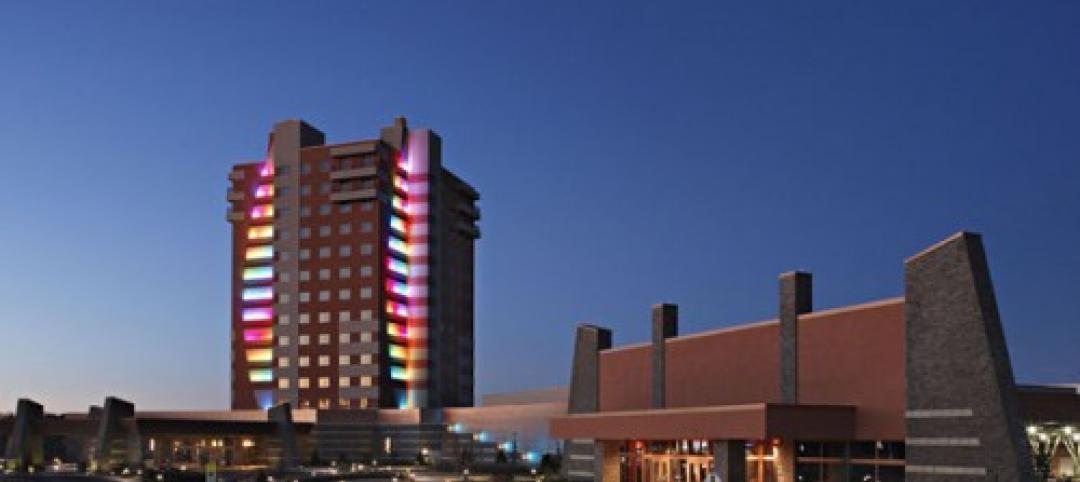NASA recently held a competition to design a commercially enabled habitable module for use in low Earth orbit that would be extensible for future use as a Mars transit vehicle. That may sound like a mouthful, but the resulting winning design from MIT can be explained much more simply as a luxury space hotel.
The project, dubbed the Managed, Reconfigurable, In-space Nodal Assembly, or MARINA, was designed as a commercially owned and operated space station that features a luxury hotel as the primary anchor tenant and NASA as a temporary co-anchor tenant for 10 years, according to MIT.
MARINA hopes to make orbital space holidays a reality with a luxury hotel that will provide eight earth-facing rooms. A bar, restaurant, and gym are also included in the design.
The hotel would be the main source of revenue, but other revenue-generating features would include rental of serviced berths on external International Docking Adapter ports for customer-owned modules and rental of interior modularized rack space to smaller companies that provide contracted services to station occupants. This could include satellite repair, in-space fabrication, food production, and funded research.
Some of the project’s key engineering innovations include extensions to the International Docking System Standard (IDSS) interface, modular architecture, and a distribution of subsystem functions throughout the MARINA’s node modules.
“Modularized service racks connect any point on MARINA to any other point via the extended IDSS interface. This enables companies of all sizes to provide products and services in space to other companies, based on terms determined by the open market,” MARINA Team Lead Matthew Moraguez tells MIT News.
Modules can also be used to create an interplanetary Mars transit vehicle that can enter Mars’ orbit, refuel from locally produced methane fuel, and return to Earth.
Related Stories
| Aug 30, 2013
A new approach to post-occupancy evaluations
As a growing number of healthcare institutions become more customer-focused, post-occupancy evaluations (POE) are playing a bigger role in new construction and renovation projects. Advocate Health Care is among the healthcare organizations to institute a detailed post-occupancy assessment process for its projects.
| Aug 26, 2013
What you missed last week: Architecture billings up again; record year for hotel renovations; nation's most expensive real estate markets
BD+C's roundup of the top construction market news for the week of August 18 includes the latest architecture billings index from AIA and a BOMA study on the nation's most and least expensive commercial real estate markets.
| Aug 22, 2013
Energy-efficient glazing technology [AIA Course]
This course discuses the latest technological advances in glazing, which make possible ever more efficient enclosures with ever greater glazed area.
| Aug 14, 2013
Green Building Report [2013 Giants 300 Report]
Building Design+Construction's rankings of the nation's largest green design and construction firms.
| Jul 31, 2013
Hotel, retail sectors bright spots of sluggish nonresidential construction market
A disappointing recovery of the U.S. economy is limiting need for new nonresidential building activity, said AIA Chief Economist, Kermit Baker in the AIA's semi-annual Consensus Construction Forecast, released today. As a result, AIA reduced its projections for 2013 spending to 2.3%.
| Jul 30, 2013
Better planning and delivery sought for VA healthcare facilities
Making Veterans Administration healthcare projects “better planned, better delivered” is the new goal of the VA’s Office of Construction and Facilities Management.
| Jul 30, 2013
Healthcare designers get an earful about controlling medical costs
At the current pace, in 2020 the U.S. will spend $4.2 trillion a year on healthcare; unchecked, waste would hit $1.2 trillion. Yet “waste” is keeping a lot of poorly performing hospitals in business, said healthcare facility experts at the recent American College of Healthcare Architects/AIA Academy of Architecture for Health Summer Leadership Summit in Chicago.
| Jul 22, 2013
Top Hotel Construction Firms [2013 Giants 300 Report]
Manhattan Construction, Structure Tone, Lend Lease top Building Design+Construction's 2013 ranking of the largest hotel contractors and construction management firms in the U.S.
| Jul 22, 2013
Top Hotel Engineering Firms [2013 Giants 300 Report]
AECOM, Parsons Brinckerhoff, Buro Happold top Building Design+Construction's 2013 ranking of the largest hotel engineering and engineering/architecture firms in the U.S.
| Jul 22, 2013
Top Hotel Architecture Firms [2013 Giants 300 Report]
Gensler, WATG, HKS top Building Design+Construction's 2013 ranking of the largest hotel architecture and architecture/engineering firms in the U.S.

















